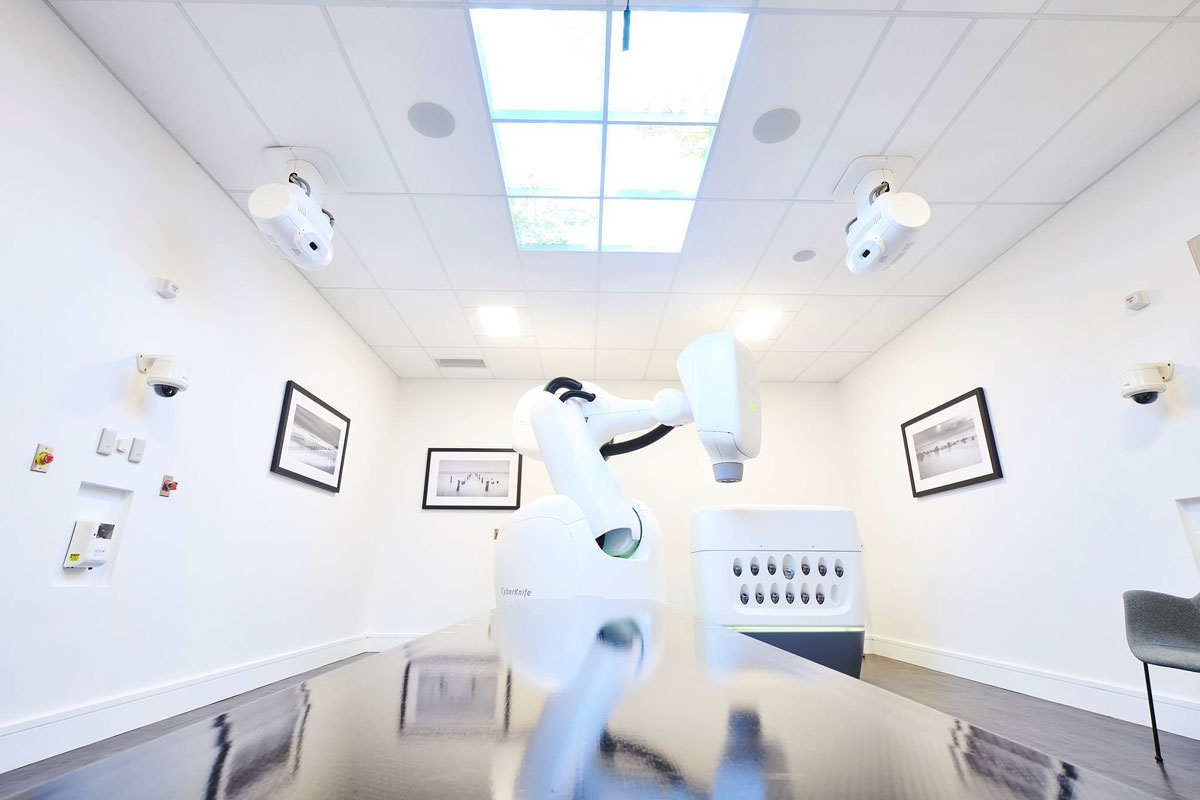
For suitable patients, Stereotactic Body Radiation Therapy (SBRT) allows shorter treatment courses, fewer side effects, and better treatment outcomes. Until recently patients with even relatively favourable prostate cancers, who were unsuitable for surgery or who opted for radiotherapy, were treated with seven- or eight-week courses of radiation.

SBRT is highly accurate, allowing larger doses of radiotherapy to be given with each treatment (fraction), while minimising the dose to surrounding normal tissues. Entire radiation courses can be given in five treatment ‘fractions’ over 1½ weeks. Prostate cancers are now thought to be more sensitive to larger fractions of radiotherapy than normal tissues, so using larger fractions relatively spares the rectum and bladder for equivalent tumour effects.
SBRT can be given with modern radiotherapy machines or purpose-built systems such as the CyberKnife, which uses a linear accelerator mounted onto a robotic arm to deliver 100-200 precisely targeted radiation beams. It tracks and automatically adjusts for prostate movement throughout treatment.
A randomised trial in 874 patients from 38 UK centres comparing prostate SBRT with conventional radiotherapy (or radiotherapy with moderately larger than conventional fraction sizes) has been completed.
Acute side effects of treatment were mild in both groups. Late side effects and cancer outcome results are awaited. Longer term results of prostate SBRT of 2142 patients (pooled) from phase two studies showed low-risk patients had a 5% rate of biochemical recurrence (i.e. a PSA rise suggesting prostate cancer remains) at seven years and intermediate-risk patients had a 10% rate of biochemical recurrence at seven years. Rates of late side effects were low.
SBRT can also be used to treat nodal or bone metastases from prostate cancer (especially with few metastases), in combination with hormonal therapy, or as a strategy to delay hormonal therapy or when disease is hormone refractory (castrate resistant).
PSMA PET scans can identify sites of metastatic disease earlier than conventional scans. These metastases might be suitable for SBRT.
Urologists can place SpaceOAR, a gel that dissolves over a few months, between the rectum and the prostate, which can reduce the risk of rectal complications from low to very low for standard patients (and may be especially useful with previous radiotherapy).
For less favourable prostate cancers, hormone therapy may be required, and for aggressive, but still localised, cancers, SBRT is being investigated as a boost to follow a course of conventional IMRT radiotherapy, much like brachytherapy needles placed in the prostate were used as a boost (but without that surgical procedure).
Key messages
- SBRT using larger yet fewer, more accurate radiotherapy fractions are producing good results in prostate cancer
- Robotic radiosurgery systems can track prostate movement throughout treatment, increasing accuracy
- PSMA PET scans identify sites of failure earlier than before and help stage patients planned for radical treatment
References available on request.
Questions? Contact the editor.
Author competing interests: Dr Bydder declares a financial benefit from patients treated with Cyberknife stereotactic radiation
Disclaimer: Please note, this website is not a substitute for independent professional advice. Nothing contained in this website is intended to be used as medical advice and it is not intended to be used to diagnose, treat, cure or prevent any disease, nor should it be used for therapeutic purposes or as a substitute for your own health professional’s advice. Opinions expressed at this website do not necessarily reflect those of Medical Forum magazine. Medical Forum makes no warranties about any of the content of this website, nor any representations or undertakings about any content of any other website referred to, or accessible, through this website.

